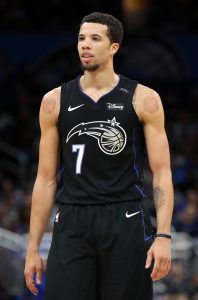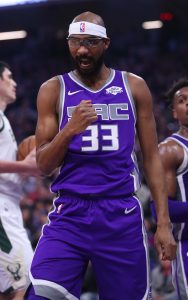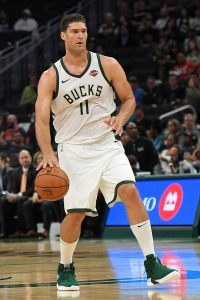Only four teams are still alive in this year’s NCAA tournament, and the list of 2019 early entrants continues to grow by the day, signaling that NBA draft season is just about here.
We’re still two and a half months away from draft day, but there are a number of important dates and deadlines on the calendar in the coming weeks and months as seniors look to boost their draft stock and underclassmen weigh whether or not to enter the draft — and then whether or not to keep their names in the 2019 pool.
Let’s run through the timeline of dates and deadlines to watch up until draft day…
April 11 (11:59pm ET): Deadline to request evaluation from NBA Undergraduate Advisory Committee
Beginning this year, an early entrant who requests an evaluation from the NBA Undergraduate Advisory Committee can hire an NCAA-certified agent without worrying about losing his remaining college eligibility.
April 17-20: Portsmouth Invitational Tournament
Only college seniors are eligible for this pre-draft camp, which takes place in Portsmouth, Virginia.
April 21 (11:59pm ET): Deadline for early entrants to declare for the draft
College underclassmen and international early entrants have until the end of the day on April 21 (Easter Sunday) to submit their names into the 2019 NBA draft pool. They can always withdraw their names later if they decide they’re not quite ready to go pro.
Once the early entrant list is set, NBA teams can begin conducting or attending workouts for those players.
April 26 – May 3: Invites issued for draft combine, G League Elite Camp
While the combine has been a part of the NBA’s pre-draft process for years, the G League Elite Camp has been revamped for this season to accommodate draft prospects. We have the details on those changes right here.
May 12-14: G League Elite Camp
NBA G League invitees will participate in the first half of this mini-camp before 40 top draft-eligible players who weren’t invited to the combine participate in the second half. Again, more details can be found here.
May 14: NBA draft lottery
The 2019 draft lottery will be conducted on May 14, marking the first time that the NBA’s new lottery format will be used. The full odds under the new format can be found right here, while our reverse standings provide a glimpse at which the pre-lottery draft order will look like.
With the lottery odds flattened out, the NBA’s worst team will only have a 14% shot at the No. 1 overall pick, as opposed to the 25% chance it had in the past. In other words, the new format could make for a very interesting night on May 14.
May 15-19: NBA draft combine
This five-day event, which takes place in Chicago, allows NBA teams to get a first-hand look at many of this year’s top draft-eligible players (though perhaps not a handful of 2019’s very best prospects, since potential top-five picks don’t have much to gain by participating in the combine).
The combine will be particularly important for early entrants who have yet to decide whether or not to stay in the draft. The feedback they get at the combine could go a long way toward dictating whether they keep their names in the draft or return to school for another year.
May 29 (11:59pm): NCAA early entrant withdrawal deadline
College underclassmen who want to retain their NCAA eligibility will have to withdraw their names from the draft pool by May 29. NBA rules call for a later withdrawal deadline, but the NCAA has its own set of rules that say the deadline is 10 days after the combine.
As such, a college underclassmen could technically wait until the first week of June to withdraw from the draft and retain his NBA draft eligibility for a future year. However, he would forfeit his amateur status in that scenario, making him ineligible to return to his NCAA squad.
June 10: NBA early entrant withdrawal deadline
This is the NBA’s final deadline for early entrants to withdraw their names from the draft pool and retain their draft eligibility for a future year. By this point, we generally know whether an NCAA underclassman kept his name in the draft or not, but this is an important deadline for international players, who aren’t subject to the same restrictions as college players. We’ll likely hear about several international early entrants withdrawing from the draft during the days leading up to June 10.
June 20: NBA draft day
The most exciting few weeks of the NBA offseason unofficially get underway on draft day, which is often when the first major trades of the summer are completed and we get a sense of which direction certain teams are heading.
It’s also worth noting that the hours and days after the draft ends will be hugely important for many of this year’s draft-eligible prospects — a ton of players who aren’t selected with one of the 60 picks in the draft will reach agreements shortly thereafter to play for an NBA team’s Summer League squad, or even to attend training camp with a club.
Note: The NCAA previously announced a rule change that would allow players to remain in the draft through draft day and still return to school if they go undrafted. However, that rule change wasn’t mentioned at all in a recent memo issued by the NCAA, so we’re operating under the assumption that it won’t go into effect this year. If that changes, we’ll update this article as required.
Information from ESPN’s Jonathan Givony was used in the creation of this post.


 Tyus Jones
Tyus Jones
